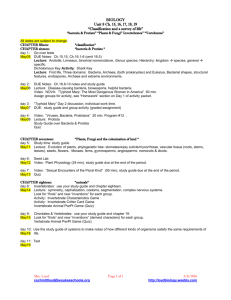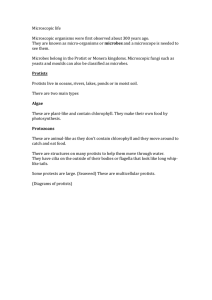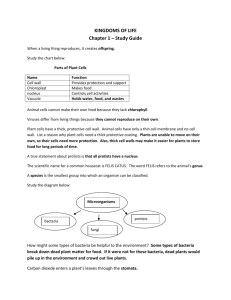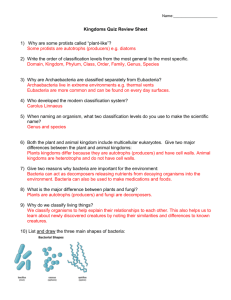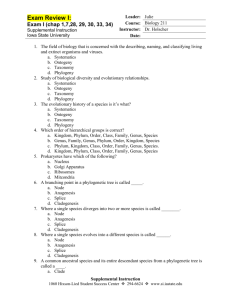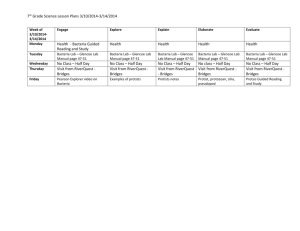CV Update April 2005
advertisement
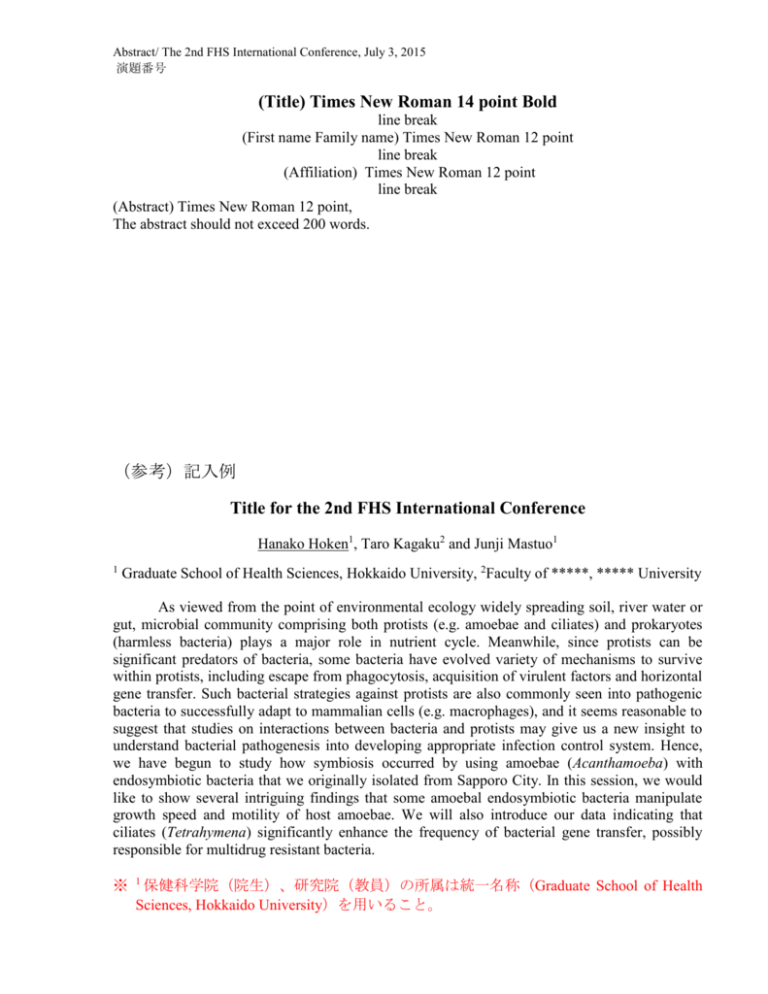
Abstract/ The 2nd FHS International Conference, July 3, 2015 演題番号 (Title) Times New Roman 14 point Bold line break (First name Family name) Times New Roman 12 point line break (Affiliation) Times New Roman 12 point line break (Abstract) Times New Roman 12 point, The abstract should not exceed 200 words. (参考)記入例 Title for the 2nd FHS International Conference Hanako Hoken1, Taro Kagaku2 and Junji Mastuo1 1 Graduate School of Health Sciences, Hokkaido University, 2Faculty of *****, ***** University As viewed from the point of environmental ecology widely spreading soil, river water or gut, microbial community comprising both protists (e.g. amoebae and ciliates) and prokaryotes (harmless bacteria) plays a major role in nutrient cycle. Meanwhile, since protists can be significant predators of bacteria, some bacteria have evolved variety of mechanisms to survive within protists, including escape from phagocytosis, acquisition of virulent factors and horizontal gene transfer. Such bacterial strategies against protists are also commonly seen into pathogenic bacteria to successfully adapt to mammalian cells (e.g. macrophages), and it seems reasonable to suggest that studies on interactions between bacteria and protists may give us a new insight to understand bacterial pathogenesis into developing appropriate infection control system. Hence, we have begun to study how symbiosis occurred by using amoebae (Acanthamoeba) with endosymbiotic bacteria that we originally isolated from Sapporo City. In this session, we would like to show several intriguing findings that some amoebal endosymbiotic bacteria manipulate growth speed and motility of host amoebae. We will also introduce our data indicating that ciliates (Tetrahymena) significantly enhance the frequency of bacterial gene transfer, possibly responsible for multidrug resistant bacteria. ※ 保健科学院(院生)、研究院(教員)の所属は統一名称(Graduate School of Health Sciences, Hokkaido University)を用いること。 1

